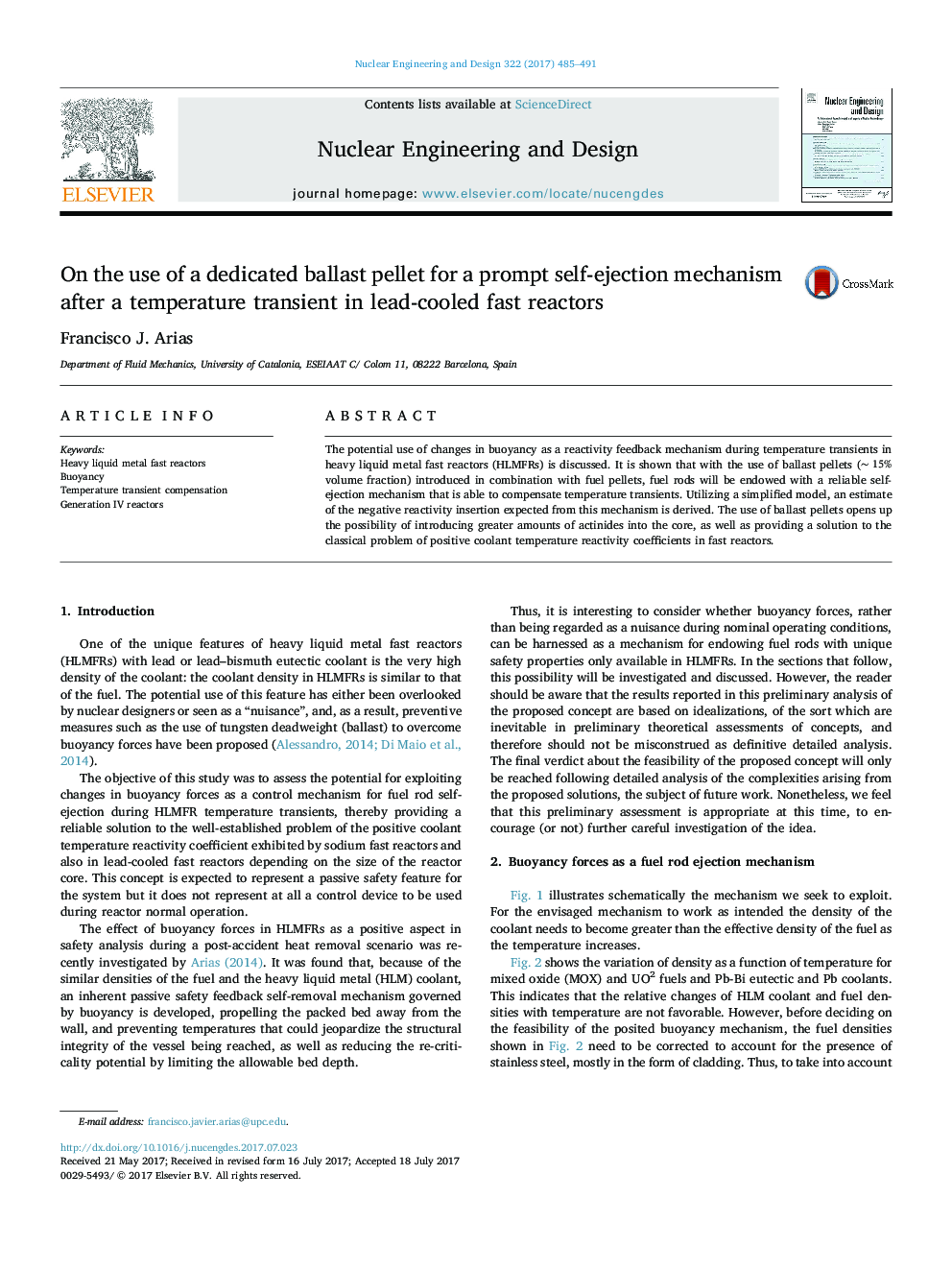| Article ID | Journal | Published Year | Pages | File Type |
|---|---|---|---|---|
| 4925284 | Nuclear Engineering and Design | 2017 | 7 Pages |
Abstract
The potential use of changes in buoyancy as a reactivity feedback mechanism during temperature transients in heavy liquid metal fast reactors (HLMFRs) is discussed. It is shown that with the use of ballast pellets (â¼15% volume fraction) introduced in combination with fuel pellets, fuel rods will be endowed with a reliable self-ejection mechanism that is able to compensate temperature transients. Utilizing a simplified model, an estimate of the negative reactivity insertion expected from this mechanism is derived. The use of ballast pellets opens up the possibility of introducing greater amounts of actinides into the core, as well as providing a solution to the classical problem of positive coolant temperature reactivity coefficients in fast reactors.
Keywords
Related Topics
Physical Sciences and Engineering
Energy
Energy Engineering and Power Technology
Authors
Francisco J. Arias,
